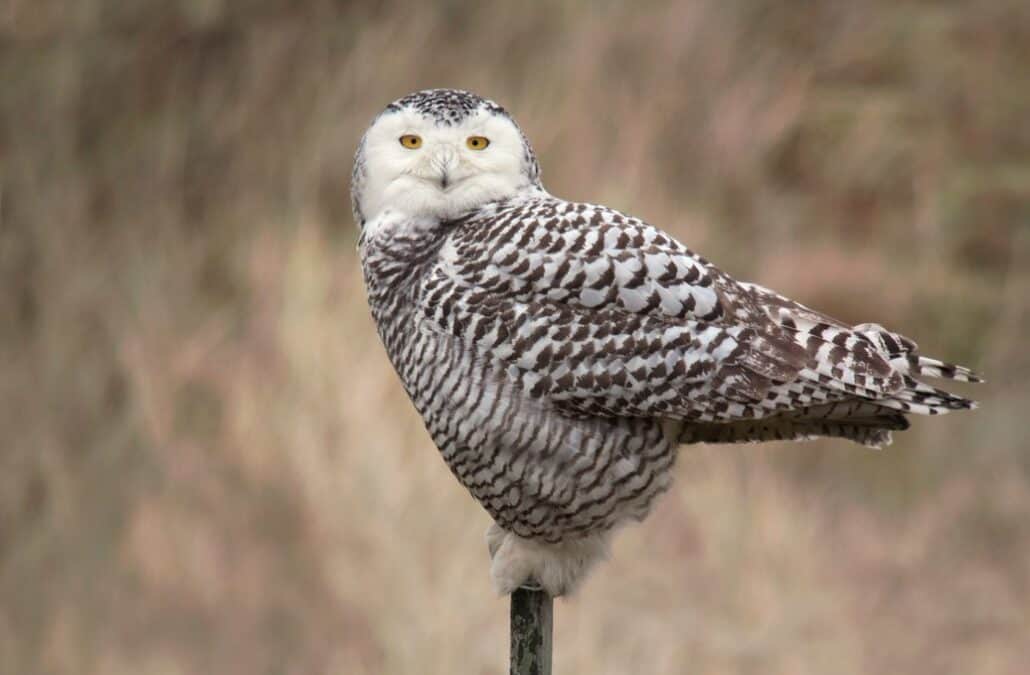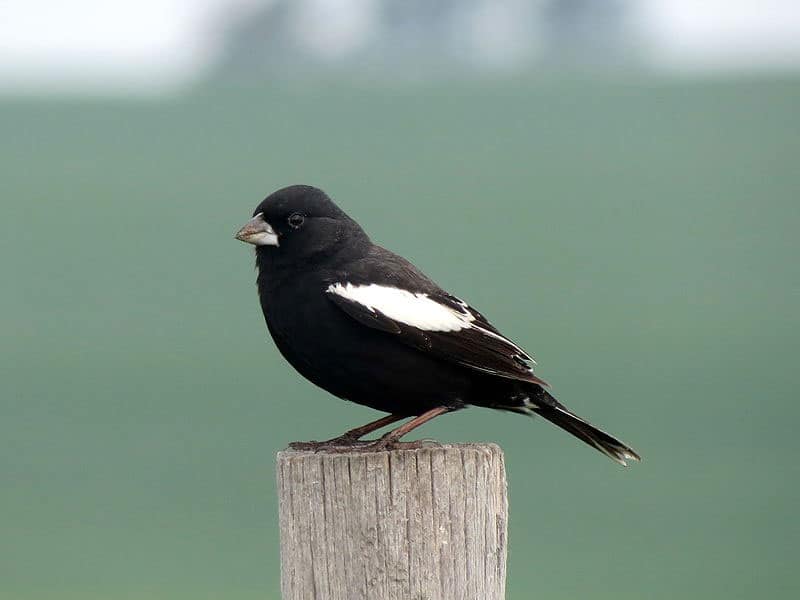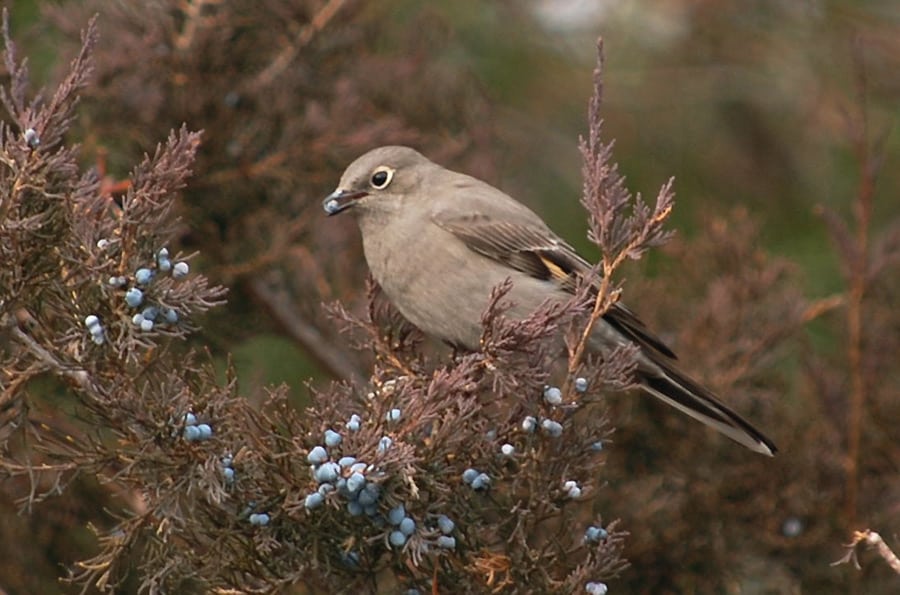Backyard bird watching need not suffer just because the weather turns cold.
Just because the days are shorter and the warblers and hummingbirds are gone from our midst (for most of us, that is) doesn’t mean we should put our binoculars, field guides, and bird watching plans in storage for the winter. There are many winter activities we can enjoy as backyard bird watchers. Here are a few suggestions:

10. Feeder check.
I know it’s obvious, and the birds don’t really need our feeders to survive, but let this serve as a gentle reminder to check on your seed stock and on the status of your feeders. While inspecting my feeders the other day, I noticed that our large gazebo feeder was nearly falling apart. Its replacement looks a lot better and holds more seed—an all-around upgrade.
9. Switch to high-protein foods.
Suet and peanuts are great high-energy foods for winter bird feeding. Today, more than ever before, there is a plethora of great peanut and suet feeders available to discerning consumers. Visit any store selling wild-bird products and ask about these feeders and foods. If there is no retail store in your area, head for the grocery store.
Purchase generic unsalted peanuts (shells removed) and offer them on your platform feeder or in a tube or hopper feeder. At the meat counter, look for packages of suet (sometimes labeled as beef kidney fat). Suet can be offered as is, placed in a mesh onion bag, or it can be rendered (melted) and then re-hardened in your freezer.
Some feeder operators who render their own suet also add raisins, oats, corn meal, peanut bits, or peanut butter to the mix while it is in liquid form. Poured into small cups or ice trays it will harden into handy sizes for feeding.
8. Watch for unusual visitors.
Bad weather can really smoke out the unusual birds. Heavy snows here in Ohio will bring lots of our usual feeder visitors to our yard, plus blackbirds and the occasional oddity such as a swamp sparrow or a Savannah sparrow. Will this be the winter that the northern finches invade southward? I hope so. It’s been a while since I’ve seen a common redpoll or an evening grosbeak.
7. Make bird shelters.
Our windy ridgetop yard catches every gust of cold winter weather. We try to make our birds a bit more comfortable by building brushpiles and lean-to wind breaks on the windward side of our feeders. These structures, which take only a few minutes to build, block the full effect of the wind, giving the birds a sheltered spot for feeding and resting. Creating these sheltered spots gives me more satisfaction—almost—than feeding the birds.
6. Check your nest boxes for roosters.
If you have sturdy nest boxes on your property you may already be providing a sheltered spot for your birds. Check inside your nest boxes for evidence that birds are using them as nighttime roosts. Our bluebird boxes host as many birds in winter as they do in summer. Nuthatches, titmice, chickadees, woodpeckers, wrens, owls, starlings, house sparrows, and bluebirds are just a few of the species that will roost in nest boxes outside the normal breeding season.
5. Follow a feeding flock.
While you’re out filling the feeders or out for a walk in the woods, watch and listen for signs of a feeding flock. Winter feeding flocks comprise birds of different species that are loosely knit together in a quest for food, while being vigilant for predators. A typical feeding flock here in Ohio might consist of chickadees, titmice, nuthatches, kinglets, woodpeckers, creepers, and perhaps a yellow-rumped warbler, an eastern bluebird, and a hermit thrush. The flock will make little chips and seets and other noises while flitting through the trees looking for food. If an alarm note sounds, watch for the flock to stop moving or make a dash for thicker cover.

Looking to Subscribe?
Get 6 print issues of the magazine delivered to your door
& free digital access
- One Year Print Subscription: $26
(to US or Canada, includes digital access) - One Year Digital-only Subscription: $15
- Two Year Print Subscription: $48
(to US or Canada, includes digital access)
4. Look at tracks.
A favorite winter activity of mine is trying to determine what a bird has done by looking at the impressions it has left in the snow. It’s amazing how much of your yard is visited by birds in the course of a day. The bird tracks left behind in the snow can be a great indication of what birds were there and what they were doing. I especially enjoy looking at crow tracks to try to discern what these very smart birds were doing and thinking. Sometimes I’ll find a spot where an owl’s wing and leg prints tell me of a plunge after an unseen mouse, or a set of turkey tracks headed for my neighbor’s cornfield. As an added activity, try to decipher the many animal tracks you’ll also encounter.
3. Listen for owls.
January and February are prime courtship and nesting time for many owl species. This means that the owls may be calling in the middle of the night, communicating with potential mates and rivals. Take a moment to step outside and give a listen. Here’s a tip: Cup a hand behind each ear. This focuses the sound, creating a kind of parabolic gathering of sound. If you hear an unfamiliar sound in the night, consult one of the many excellent audio guides to bird sounds to solve your mystery. While listening for owls in the winter of 1998, we discovered that coyotes had moved into our area. Hearing those coyotes yip and howl was thrilling and eerie at the same time.
2. Watch for signs of spring.
While your eyes and ears are tuned in to nature, listen and watch for the first subtle signs of spring. Many resident bird species will begin singing on warm, sunny January days, even though the breeding season is weeks or months away. The lengthening days and increasing intensity of sunlight act to stimulate the birds’ hormones.
Evidence of this is seen in the increased attention that males will pay to females (singing, chasing, defending) and in the increase in general activity among your birds. Long before any nest building takes place, our mourning doves are doing their sad cooing, our male bluebirds are chortling and waving their wings from the top of our houses, and our male goldfinches are getting just a little bit brighter plumage.
1. Keep a journal.
When did the first junco show up at your feeder last fall? When did the last hummingbird depart? What date do the fox sparrows pass through in spring? Did that sapsucker show up in 1996 or 1997? These are questions that can be answered with a quick reference to your bird or nature journal.
As I’ve mentioned before in these pages, keeping some sort of written record of your sightings can be fun, useful, and fascinating. We keep our journal in a spiral-bound volume intended for that purpose. We also keep bird sightings notes on our home computer, so we know exactly when the phoebe started building its nest under our deck in 1996.
Things to note in a journal include sightings, date, time, weather conditions, plus bird behavior, arrival and departure dates, and interesting tidbits you wish to remember. Try it, you’ll like it!




